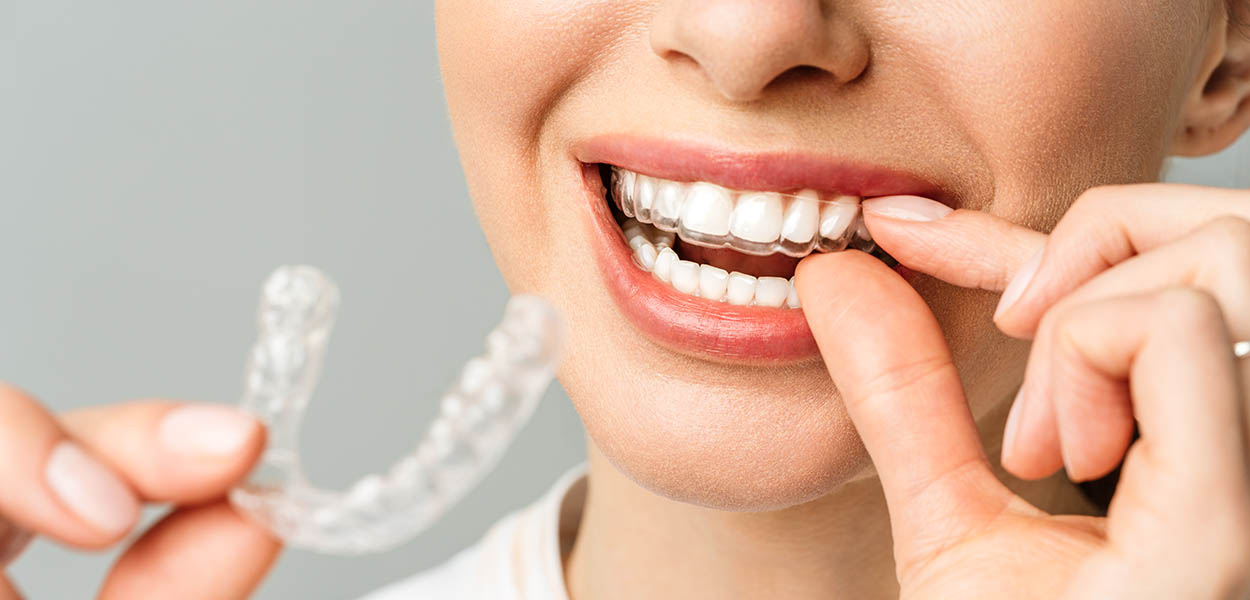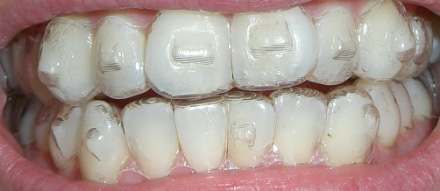When Invisalign Requires More Than an Aligner

I’m considering Invisalign to perfect my smile. I have a friend in Invisalign treatment, and she was talking to me about the buttons her orthodontist is using. I thought Invisalign was just a series of aligners, similar to retainers, and made straightening your teeth easy and almost unnoticeable. What are these buttons?
Sincerely,
Pat R.

Invisalign is a treatment option for some orthodontic problems. Simply pop your aligner in, wear it for 22 hours a day, taking it out to brush, floss and eat. Then, as prescribed by your orthodontist move on to a new set of aligners until your teeth are beautifully straight. Seems easy, right? And it is, in a perfect world. But as we all know, we don’t live in a perfect world, and sometimes treatment is more intensive than that.If you only have a minor orthodontic issue, it can be as simple as what you have read. If you have a more serious malocclusion, though, treatment might be a little more complex.This is where it is important that you choose a provider who has great communication skills and expertise in 3D tooth movement. Sometimes, patients go in to treatment thinking they’ll only need the aligners, only to find out their issue was a little more complex and will require attachments to correct.Before my patients agree to a treatment plan, I make sure to discuss in detail each option, and what I believe each option will entail for the duration of their treatment. There are always issues that can pop up during treatment, and teeth may not respond exactly how we thought before treatment began. However, if we can prepare the patient for as much as possible before we begin, it makes treatment much smoother and more pleasant.
And for some cases, the Invisalign aligners alone cannot provide the force needed to properly move the teeth into their ideal positions. So we use attachments, also called buttons, to help us. They are essentially small, tooth-colored areas of bonding material that we place on certain teeth to help us in more difficult cases. They provide a larger area for your aligners to grip on to, and then work as anchors to move some teeth, while others stay stationary.


Sincerely,
Dr. S.
I’ve been researching Invisalign and it looks so efficient and easy! I just put a new aligner in every two weeks, and in a year, I’ll have the smile I’ve always wanted. That seems great! But, the other day I was talking to a friend who used Invisalign, and she said her treatment took much longer than a year, and she had to use rubber bands. I thought those were only for metal braces? Isn’t Invisalign supposed to be simple, and fast?
Sincerely,
Shelly W.

First, it is important for patients to understand that when they read or hear a statement referring to treatment time, that refers to an “average” time. That means your specific case may take a longer, or a shorter, amount of time to achieve your ideal smile. Some people have teeth that move much more efficiently, and others have teeth that respond a bit slower. We can’t ever give you an exact time frame, because we simply don’t know how your teeth will respond to treatment. However, on average, an Invisalign case takes about a year.Next, it’s important to understand Invisalign. Yes, it consists of a series of clear aligners that are changed out, on average, every two weeks. These Invisalign aligners by themselves are wonderful at correcting minor bite problems. But when we run in to more serious malocclusions, we need to discuss the use of attachments and rubber bands to ensure the best outcome at the end of treatment.I’m finding that many patients go in to Invisalign treatment without a clear understanding of what all may need to be involved to give them the smile they want. That’s why it is so important to discuss all treatment options with patients. In some cases, attachments, buttons and/or rubber bands may be needed to get the necessary force to guide the teeth to their proper locations.To correct issues such as more serious overbites, we can use rubber bands to assist in moving the jaw to its proper position. We’ll place attachments for the rubber band to attach to, and may need to make small adjustments to your aligners to make room for the attachments. They work just as they would with standard braces, but because you’re wearing Invisalign aligners, too, they shouldn’t be as noticeable.
Invisalign has come a long way since it was first introduced, and the ability to use buttons, attachments and elastics makes the treatment an option for many more patients than ever before. But to ensure you’re getting the best treatment possible, it’s important to be sure you’re seeing the best provider possible. And that means one who not only has experience using Invisalign, but who has in depth knowledge of how teeth move, and has had success treating even the most complex cases.
Sincerely,
Dr. S.


